Classic, innovative technologies teach new media lessons
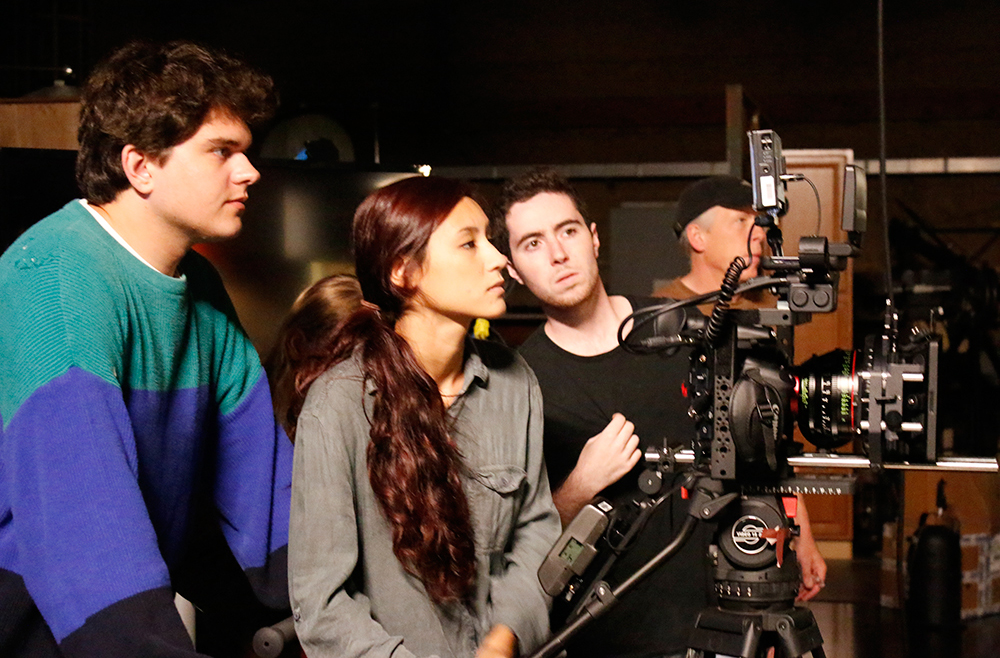
In an age of technology, The Media School is embracing both the cutting edge and the classic.
Instructors in all three areas – journalism, telecommunications and film studies – are equipping students with technological tools for practical experience.
“You can’t be totally creative until you understand how the technology functions,” said Jay Kincaid, the school’s director of facilities and technology who has three decades of experience as a broadcast director. “For someone to be creative in their job, they have to understand what they are using.”
New cameras will improve video experience
The introductory journalism class J210 Visual Communications has said goodbye to the durable Canon G11, a point-and-shoot camera, and has welcomed 100 Canon T5i DSLR cameras into the media lab.
The DSLR cameras, 200 batteries and lenses, 30 Sony Nx3 digital camcorders and several audio recorders arrived at Ernie Pyle Hall earlier this semester.
“It was like Christmas,” said Allen Major, the multimedia lab director, of the boxes that arrived in August and the weeks of inventorying all the new equipment. “But I think we are going to have some nicer looking video and sharper pictures.”
The used G11s, which Major said are one of the most durable cameras he has worked with, are on sale through IU Surplus.
“The reason I went to DSLR is it will be much more useful for mixing things together,” Major said, explaining the cameras will transfer video files uniformly. This has been an issue as more and more student projects include video. “Now everything we have is full HD. And, this camera is silent even when you are focusing or adjusting.”
The new cameras also have lavalier microphones, so J210 students will learn to use the mikes instead of picking up this skill in 300-level courses or by trial and error on their own.
Journalism freshman and Ernie Pyle Scholar Taylor Telford is using the camera in associate professor Jim Kelly’s section of J210.
“The DSLR is so fantastic, “ Telford said. “I had a really great shooting experience.”
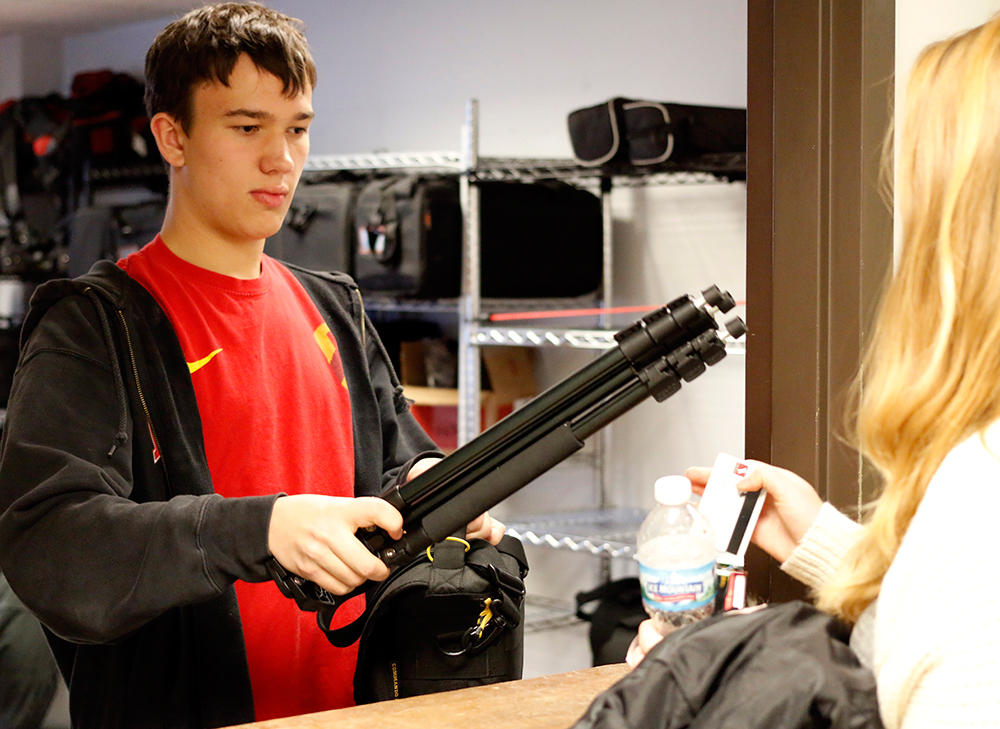
Telford said she checked out a T5i from the media lab at least once a week for her J210 photo story on a chili pepper farmer and for her video on the IU Lily Library’s head conservationist. While she was familiar with a DSLR from high school, she said the instruction during the class lecture and lab helped students at all experience levels.
“You do get a lot of instruction on the technicalities and tips, and the best methods in the lectures,” she said. “In lab, there are lots of chances to go out and practice. We are learning before being thrown into it. When it came around to doing the project, everybody was ready for it.”
Deciding to purchase these cameras was a summer-long process for Major and journalism TV studio manager Scott Myrick.
“I talked with professors and spent the better part of the summer researching and talking to Canon,” Major said. One of the difficulties in buying technology is trying to invest in a product that won’t quickly become outdated, he explained.
“We’re in a weird spot where we have to think three to four years ahead,” said Major, who also has pro experience in broadcast media. “You’re always chasing it.”
One example of a technology Major has kept an eye on is 4K equipment. The “4” in 4K refers to the lines of resolution of the screen you use to view the picture or video, he explained. While high definition is 1920 lines across by 1080 down, 4K is 4096 by 2160.
However, he chose to wait on purchasing new 4K-equipped broadcast cameras because the technology may double to 8K or triple to 12K within a few years.
The new Sony Nx3 broadcast cameras are HD, boast longer battery life and use SD memory cards instead of tape.
“The broadcast students are very excited,” Major said. “They are happy to see the transition from tape.”
Major also emphasized that purchasing new technology for journalism is about teaching students to use equipment they are likely to find on the job.
“I don’t want anyone to see technology as a stumbling block,” he said. “We’re here to help students become comfortable with equipment.”

Tapping into 1960s technology shapes film projects
Susanne Schwibs wants to teach her students to see the world through different media. That’s just one of the reasons the lecturer uses Super 8 cameras in C438 Experimental Cinema, a course in the Department of Communication and Culture.
The Super 8 is a video camera released in 1965, originally designed for home videos.
“You will see it used in a lot of documentaries, because it reminds you of the past,” said Schwibs, an Emmy-winning filmmaker who has produced several documentaries for WTIU.
The camera name comes from its 8mm film, which is about the width of a fingernail. “The Super 8 is grainy because the images are tiny, tiny 8mm images,” Schwibs said.
Senior Colleen O’Keefe chose to use the Super 8 to shoot her project for Schwibs’ class. The students were given creative freedom, O’Keefe said. The only requirement was that the video has to be five minutes long.
“My project is a metaphor for my current state of mind,” O’Keefe said. “I’m looking for jobs and determining my career. It’s a very intense moment, making a lot of decisions that will affect my future.”
The Super 8 conveys the right aesthetic for her film, she explained. Her filming takes place in a grocery store, and she wanted the fluorescent lights to hit the camera and create a dingy, vintage look.
“The reason I chose Super 8 is the simplicity of it,” O’Keefe said. “Naturally, when people see it, they get this vibe of a home movie.”
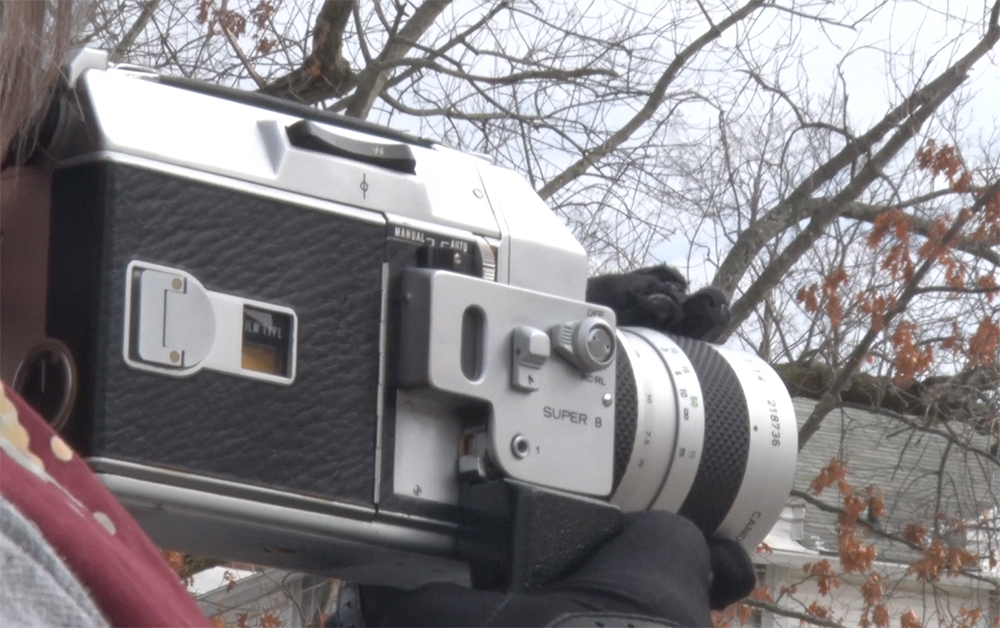
She studies in telecommunications with a concentration in design and production, and in CMCL focusing on film studies. It was her first time using the Super 8, and it added to her appreciation of film preservation.
“I’m really interested in the argument that’s happening right now in the Hollywood world where a lot of directors are pushing for preservation of film, while others are saying it is antiquated,” she said. “I do appreciate film as a medium. Film by its nature is a physical thing.”
“At the same time, making movies digital can be cheaper and faster,” she added. “But you lose some of that aesthetic.”
Russell Sheaffer, a CMCL graduate student, is an associate instructor for C335 Production as Criticism, and his section is the first to focus exclusively on the Super 8 camera. Sheaffer explained that he loves witnessing the moment when students develop their first rolls of film.
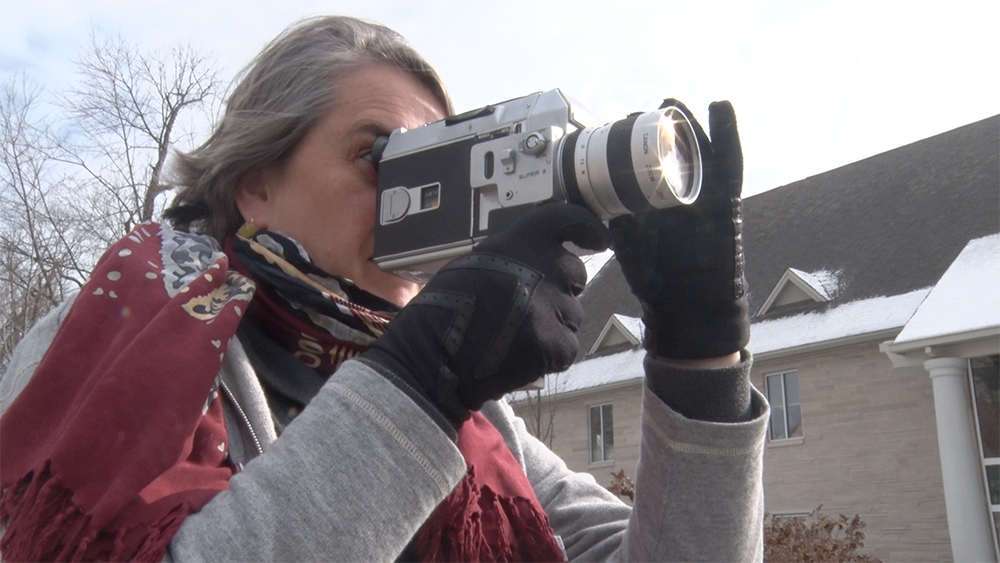
“It’s this incredible moment of realization for them because they are looking at the film and physically cutting the film,” he said “It makes the digital work they have done before make sense.”
The department previously owned three Super 8s and purchased four more for Sheaffer and Schwibs’ classes from Pro8mm, a company in Burbank, California.
Schwibs said the Super 8 has recently seen a surge in popularity, another reason to use the camera in classes.
“It’s in a way rediscovered,” she said. “It was never a commercial technology, it was for home films. It was always simple.”
With a Super 8 camera, there is a finite amount of film, so videographers have to plan their shots, Sheaffer noted.
“I think there is so much wonderful work you can do on digital, but I’m really particularly interested in having my students think about what they can do with any medium,” Sheaffer said. “What stories can they tell that are fundamentally different that can be formed by the medium?”
“You buy a camera today, and in two or three years, you have to change it,” Sheaffer said. “This is a camera from the ’60s and you can still use it today.”
“What is more important than the tool is what the student wants to express,” Schwibs said. “If you know all the tools available, you can pick the right tool for the right effect rather than being enamored with the latest technology.”
Studio 5 renovation results in state-of-the-art facility

Telecommunications renovations are creating a studio that can’t be found at any other college in the country, said Kincaid, who for years was senior director of IU Radio and Television Services.
“The facility we are building, you are not going to find in any other university,” Kincaid said, “and not in a local news station, either. It’s the type of control room you’ll find in New York or L.A.”
The renovations in Studio 5, a 2,800-square-foot teaching studio in the Radio-TV Building, began in the spring. The studio will go online the first day of classes next semester, though classes have been using it this fall.
“The goal is to give students equipment that they will encounter in the professional world,” Kincaid said. “When students walk out of here, they will be able to say I’ve seen that, I’ve worked on that.”
That equipment includes four new cameras (three studio and one jib camera, all with teleprompters) a new switcher, multi-track recorder and a router. A new control room is under construction, separate and soundproofed from the main studio.
And don’t forget the new DMX lighting system being installed, Kincaid added.
“It will be a really robust system,” Kincaid said, describing it as a system of controlling “intelligent” lighting fixtures and dimmers for studios. “It’s pretty much the industry standard in studio lighting.”
He said the students haven’t fully grasped the extent of the new studio; the boxes and naked wires aren’t an impressive sight yet. Soon, though, they are going to see a big difference, he said.
Telecommunications senior Katie Hammett is taking two classes, T436 Advanced Cinematography and T356 TV Studio Production, that meet in Studio 5. Most telecommunication production classes are in the studio, she explained, and teach practical lessons.
“I’ve learned how to set up cameras, how to organize cables and equipment so no one trips over them,” she said. “I can work an audio teleprompter and the technical director’s board. It’s a lot of hands-on experience. It’s given me a basic knowledge of how real-world TV production works. ”
She said the facility will be even better when the studio renovations are done and the new control room is operational.
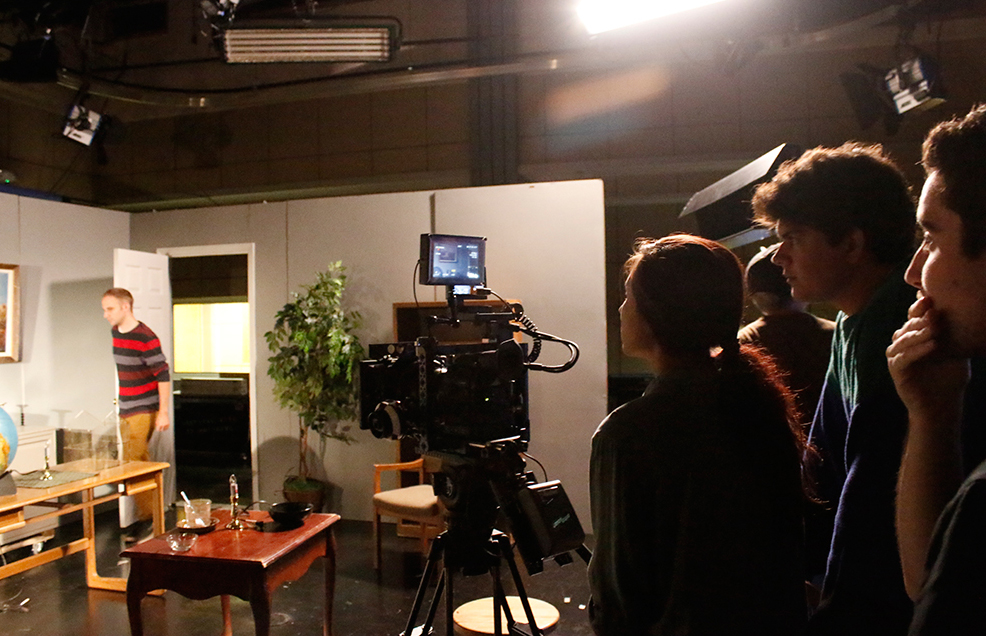
“It’s just going to be a lot more organized,” she said. “It’ll make it a lot easier to control everything, and it will be a lot more professional looking. “
Kincaid said the faculty, including professor of practice Robby Benson, lecturers Jim Krause, Jo Throckmorton, John Walsh and their graduate assistants, have done an excellent job teaching in the studio while studio renovations are ongoing.
“My hope is that the students will fully understand how incredible this is,” Kincaid said. “It’s not just the newest and coolest, it’s the high-end industry standard.”
Kincaid knows all about standards of the industry. He directs a four-hour live NFL pregame show for CBS Sports Network called That Other Pregame Show, commuting to New York every weekend. His Sunday morning call time for the show is 5 a.m.
So taking IU’s student studio from functional to front line became his project.
He worked alongside other telecommunication faculty to develop the plans: Walter Gantz, department chair, who secured the money for the renovations, and George Hopstetter, chief engineer at Radio and TV Services, who helped design the studio and the control room and whose team is installing the new equipment.
Their goal is also to utilize more space in the studio, which at one point in the 1960s housed a pipe organ.
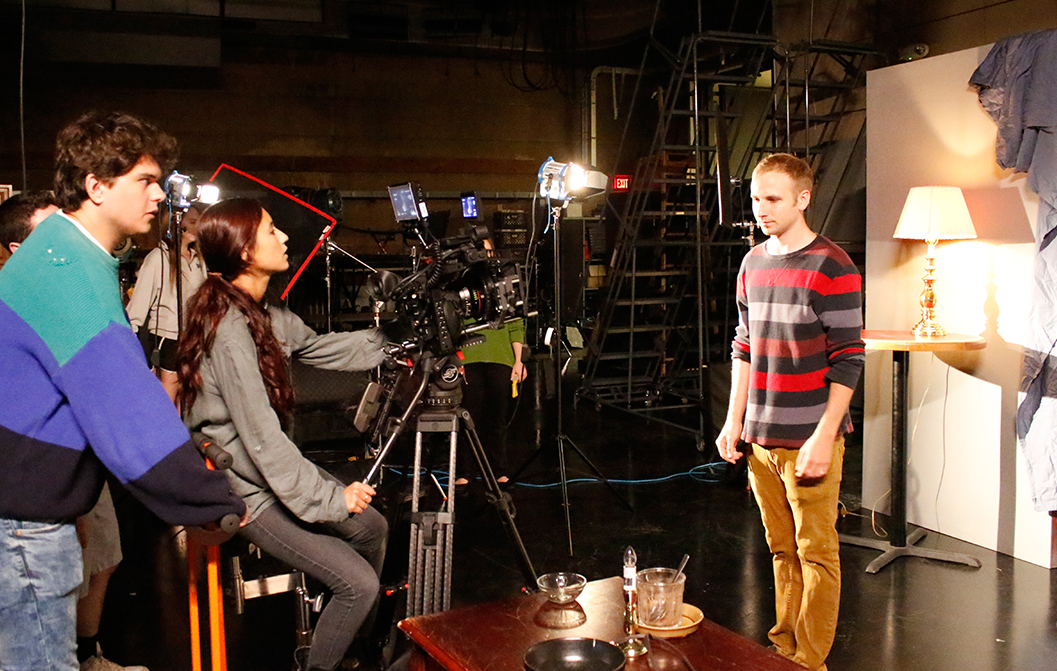
The new technology will mean a learning curve for students and teachers, but telecommunications already is planning training courses open to faculty, students and associate instructors.
Classes T283 Intro to Production Techniques and Practice, T356 TV Studio Production and three T436 classes — Advanced Production Workshop: Multi-Camera Performance Production; Advanced Production Workshop: IU Sports; and Transmedia Production — will use the studio this spring.
“I hope people understand what they are touching is truly impressive,” Kincaid said. “It’s going to give them a leg up.”

